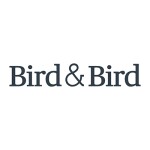Client buying behaviour has changed tremendously in the past few years, with purchasing decisions becoming more competitive and, at the same time, more nuanced. Changes in the needs and wants of clients, new entrants in the legal services space, and the development of legal tech are driving firms to become more innovative. These shifting market dynamics are forcing law firms, which have generally been more conservative, to reimagine the way in which they offer and deliver their services.
There is a tendency to assume innovation means technology, but while this is an important aspect, it is not the sole consideration: innovation must be understood in the broadest sense. In some ways, technology is the ‘easy’ answer.
Firms need to adopt an innovation mindset, embedded within the firm culture, thus undertaking a constant pursuit rather than a one-off activity. Only by adopting this mindset can innovation be applied to all aspects of the engagement operating model: people, process, and technology. The degree to which each of these building blocks is optimally leveraged flexes according to the specific engagement and client objectives. This approach results in long-term benefits for the client and an efficient, optimised legal partner.
As we know, brand owners are busier than ever. Under ever-increasing pressure to free up internal resources to take on more, while also optimising external legal spend, clients are looking for legal partners that can help them to meet these objectives. Whether it is a one-stop shop or a specific one-off need, clients are looking for reliable, high-quality output delivered in a cost-effective manner.
Some practical examples might include:
Enabling streamlined collaboration on common platforms;
Appointing one firm to manage on a regional or global basis, enabling cross-border, bigger-picture thinking that can be better aligned to the strategic business objectives; and
Streamlining or outsourcing high-volume administrative or operational activities.
The ‘right resources, right task’ approach
Bird & Bird believes in a ‘right resources, right task’ approach. The firm has been putting this into action for more than 10 years. A dedicated support operation underpins its global brand management practice and brings together a range of intellectual property (IP) specialists, including paralegals and administrators, project managers, technologists, and other operational experts. This approach has proven to be highly beneficial to clients.
Positioning the firm as a commercial, strategic partner rather than simply a legal partner is essential. Lawyers need to offer value for money and focus on the specific needs of their clients rather than taking a ‘one size fits all’ approach. With information readily available, different pricing models can be easily compared, there is increased willingness to change firms for a better ‘fit’, and there is a higher demand for ‘glocal’ – global outlook with local expertise.
There is also less focus on where the work is performed and more focus on whether the chosen method utilises the best available means; i.e., right resources, right task. Put simply, sometimes the answer is people, sometimes technology, and sometimes a combination of both. At the heart of Bird & Bird’s approach is transparency, accountability, and creativity, enabling the firm to provide greater efficiency and cost control, while retaining the highest standard of work.
Getting to know the client is key: how they prefer to work, what their goals are, understanding their risk appetite, and so on, as well as understanding how to bring meaningful value to them.
It is important to really listen to them; do not come with preconceived notions, and be honest about challenges, while also bringing solutions to the table. This attitude is vital to driving innovation forward in a mutually beneficial way. For example, if a new technological solution would be a game changer for a client, but the client data is a barrier to success, be clear about the problem and articulate the solution.
Only once a detailed understanding of the client is established can the ideal delivery model be structured, both from an operational and cost-efficiency perspective. By transforming the way in which Bird & Bird delivers IP services, the firm’s clients continue to receive access to world-class legal advice while efficiently managing the costs related to some of the more burdensome activities associated with their IP portfolios.











